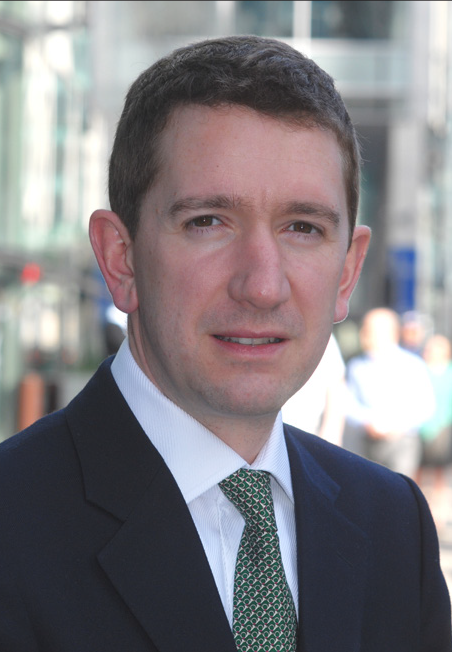

- Jonathan Curry
- Global Chief Investment Officer, Liquidity and Chief Investment Officer Americas, HSBC Asset Management
Jonathan Curry, Global Chief Investment Officer, Liquidity and Chief Investment Officer Americas, HSBC Asset Management (HSBC AM), offers a no-holds-barred view of the sector’s approach to ESG investing as it is today, and how it is changing to meet new investor needs.
ESG investing practices can be traced back to the 1960s when socially responsible investors began purposefully but unilaterally excluding stocks from their portfolios where certain business activities did not sit well with their ethical stance.
In 2004, a formalised approach emerged when, supported by the UN Global Compact, the International Finance Corporation and the Swiss government, former UN Secretary-General Kofi Annan asked a group of more than 50 CEOs of major financial institutions if they would be willing to participate in a joint initiative to integrate ESG thinking into the capital markets.
Today, while ESG is increasingly a foreground activity for many investors, generally for corporate treasurers the building of ESG drivers into investment policy and investment decisions is still very much at an early stage, says Curry.
He observes “clear bifurcation in terms of the treasurers we are dealing with”. Some he reports as being “quite far advanced in terms of developing policies and building portfolios”, while others are still “very much in their infancy”.
Progression, notes Curry, is linked in part with business need, the sector in which a business operates sometimes also influencing its readiness for ESG investing. Where ESG is placed high on the priority list for the wider organisation, then treasury will almost certainly be aware of how it will play its part, if indeed it is not already actively pursuing an ESG-informed investment policy.
“For those treasurers who are engaged with the sustainability objectives of the wider business, we’ve tended to see an initial focus on what can be achieved in the debt financing space,” he notes. “But now there is notable growth on the investing side too, with treasurers increasingly asking us how they can incorporate their sustainability drivers into their portfolios.”
Early days
Of course, there are different investment opportunities from different sources. Some are balance-sheet driven from banks, such as green or sustainable deposits. In the ‘off-balance-sheet’ world, asset managers have been introducing ESG-focused money market funds (MMFs), for example. Indeed, HSBC AM recently launched its Sterling ESG Liquidity Fund, with seed investment from British multinational retailer Tesco amongst others.
As investor interest develops in on- and off-balance-sheet investments, so more products will be offered, raising the profile further. However, ESG investment product selection is currently more of a challenge than it is for non-ESG investment solutions, notes Curry. But this is to be expected.
“Non-ESG products are well-established, and there’s more uniformity globally in regulation which in turn leads to more consistency among investment options,” he explains. “To some extent, treasurers have acclimatised to a level of standardisation that is not yet evident in the sustainability space. While we expect to see increasing regulation in all the major jurisdictions, ESG investing is still in its infancy, and that is a challenge.”
Another hurdle to overcome is the need for many treasurers to develop their knowledge of ESG research providers and ESG scoring , notes Curry. Built over many years of development and wide use across financial markets, Treasurers have a clear understanding of credit ratings, with three global credit rating agencies that all will recognise and be familiar with their credit assessments of different issuers, he notes. “But, as with levels of standardisation, that degree of familiarity is not yet apparent when it comes to the different providers that offer research and scores in the ESG space.” Indeed, even where there is some familiarity with the methodologies and scoring processes used by certain ESG research providers, comparing and contrasting on a level playing field remains problematic
Yet Curry remains optimistic. “Despite current issues, my expectation is that over time, this state will improve as treasurers gain a better understanding of the different research providers and their approaches, particularly to ESG scores” he says. Indeed, alongside some consolidation that has already been seen in the researcher market, and increasing levels of international regulation coming on stream, he feels investor familiarity with processes and procedures will soon deliver a greater level of standardisation.
Making change happen
But this is a future state. What treasurers must do now, says Curry, is ensure they understand each of their investment options. As a case in point, ESG MMFs present some material differences in terms of investment processes, he explains.
“MMFs in this space are far from standardised,” he warns. “It’s really important for treasurers to delve deeply into the investment processes that are at work. They need to ‘look under the bonnet’, to ensure they are able to make the informed decision that, by investing in a particular ESG investment, it will have the ability to promote positive change.”
Of course, the promotion of change is key to any serious ESG investment. “If it does not do that, it’s questionable why there is a need to invest in the first place,” states Curry. To this end, he suggests that specific questions need to be asked about the investable universe that the treasurer has open to them, and about the level of engagement process that the fund will be employing.
“If a treasurer is looking to support the sustainability objectives of the wider business, then there has to be a means by which the fund is trying to promote change, and that has to be expressed through a credible engagement process; it can’t just be about how the fund invests its assets.”
Policy matters
It’s apparent that the wider ESG product set is not yet sufficiently mature to meet all treasury needs. Given the age of the market, relative to its non-ESG counterpart, this too is to be expected. A simple metric such as the size of ESG MMFs compared with non-ESG MMFs may impose some constraints at an investment policy level.
Policy may, for example, dictate that treasury cannot invest the amount of cash it would like to place in a particular ESG fund if it is still in its growth and development phase, explains Curry. It may also limit other sustainable investments in the cash space. Green deposits – perhaps the most prevalent of on-balance-sheet investments today – may therefore have capacity constraints.
Curry explains that the credible offerings in this space tend to directly fund green or sustainable loans. The size of the loan book, relative to the size of the standard loan book, will be smaller, so the volume of deposits than an individual bank can issue at any given point will naturally be limited. Again, over time, he believes the constraints will lift as ESG loan books expand.
The issue of fund size may seem to present a catch-22 for the market: if it’s too small, it won’t attract investors, but if it doesn’t attract investors it won’t grow. But Curry has a positive experience to relate.
“Treasurers that we’ve engaged with regarding our new Sterling ESG Liquidity MMF, and the other currencies we are planning to launch, have been willing to invest in a fund that is smaller than their policy may allow,” he reports. “In many cases, treasurers have been able to secure an exception to their minimum fund-size policy because they are specifically investing in a credible sustainable solution.” That there is policy flexibility, certainly in the MMF space, is good news because it enables investors to support – and benefit from – new and credible ESG-focused solutions.
For HSBC AM, the primary difference between its ESG MMF and its regular MMF is the investable universe to which each is exposed. The screening process that establishes the ESG universe makes it around 30% smaller than its regular counterpart. It’s a material change to that investable universe, but all other features of the fund are the same.
Indeed, in this case, whether it’s the objectives of delivering preservation of capital and provision of liquidity, the cut-off time of the funds, the post-screening credit process, or the different ways to subscribe and redeem from the fund, they are indeed all the same. It’s an advantage for treasurers.
“When a treasury client has sought approval for the ESG fund, the questions they may face around objectives and risk, for example, will attract the same response as for the regular funds that have already been approved; because the only difference is the investible universe and the size of the fund, if they can obtain policy exceptions for these, the process thereafter is relatively easy.”
Success in the making
The composition of a balanced and successful ESG portfolio depends on the wider sustainability objectives of the business and the availability of market options to meet these objectives. A widening range of ‘greened’ solutions – including now repo and commercial paper – increases the chances of success. But, as new products, all will likely face the challenge of size, scale, and availability.
At a product level, the primarily bank-offered range of sustainable on-balance-sheet solutions, for example, varies in quality. HSBC’s own in-depth product analysis across a broad spectrum of solutions has led it to feel comfortable with the ESG credentials of certain solutions, while others suggest more work is required to meet the expected standards. “It demonstrates yet again that treasurers really must do their homework to determine whether, as an investor, each solution has credibility, meets the business objectives, and encourages sustainability,” he counsels. “Only this way can a successful portfolio be created at the scale likely to be required.”
Mindful of quality issues, HSBC AM’s new Sterling ESG Liquidity MMF has a specific investment process that focuses on a best-in-class investment approach. It uses screening measures to filter issuers that have an A1, P1 or F1 rating (the highest short-term ratings by S&P, Moody’s and Fitch respectively), or their long-term equivalent, and which are demonstrably better at addressing ESG risks than other issuers in the investable universe.
While he has previously noted that the ESG scoring system and screens reduce the money market investable universe for the fund by around 30%, Curry makes the point that a transformation of this magnitude enables providers such as HSBC AM to better engage with the excluded universe to try to promote positive change.
“And for this we have a well-defined two-step issuer engagement process that is now a key component of our investment process,” he says. To meet sustainability goals, HSBC AM encourages issuers to address identified shortcomings in how they manage ESG risks, for the benefit of the investors. In addition it engages annually by letter with all banks in its investable universe on climate change related topics relevant to this sector. Banks representing by far the largest industry sector in a MMF.
This ensures that companies are aware that their ESG performance is factored into decisions on whether their short-term debt issuance is eligible to be purchased by the fund. By doing so, the aim is to increase the focus on better management of ESG risks and achieve more sustainable outcomes.
“Without a material change in the investable universe; it serves only to make engagement and promotion of change harder,” comments Curry. “This is why at HSBC AM we follow a best-in-class investment approach, and why we believe stewardship and engagement are as critical a part of the investment process as the investments themselves.”
Market motivators
From an issuer perspective, as sustainability increasingly becomes a focus for investors, those that do not pay heed to investor needs may find it progressively harder to fund themselves in the front end of the market.
On the corporate side, increasing reporting and disclosure obligations around ESG are already a fact. These “will continue to grow significantly”, Curry believes. Their impact is being felt not just at the wider business level but also in quite specific areas, such as how sustainable solutions are being used in both debt and investments.
Bodies such as the UK’s Prudential Regulation Authority are already calling for climate stress testing among banks. The provision of Greenhouse Gas Protocol Scope 3 Emissions data from businesses, the European Union (EU) taxonomy (and the UK’s own version set for 2022), and proposals for a new European Commission Corporate Sustainability Reporting Directive as a supplement to the current Non-Financial Reporting Directive, ensure pressure is mounting. With new requirements emerging in the US under the new Biden administration, ESG reporting is being forced rapidly up the corporate agenda.
Clients of institutions such as HSBC need timely data to meet their own ESG reporting requirements, Curry acknowledges. Response is forthcoming. “Both bank and asset management functions are investing in solutions and are working with our clients to enable them to meet all existing ESG reporting demands, and to help them prepare for any forthcoming changes and growth.”
Next steps
With so much happening in the ESG investment space, Curry suggests that the development of an investment policy and framework that widely reflects the individual corporate’s sustainability priorities should now be on the agenda of every treasurer.
It will be necessary to secure the buy-in of senior management for this approach, he warns, because only then will the wider objectives successfully steer progress in this space. However, the needs of one business within a group may not be the same for another, and so he suggests tackling the issue on a ‘case-by-case’ approach may be necessary.
Nonetheless, there are some “easier wins” available on the investing side, using ESG MMFs or green deposits, for example. “In any case, treasurers must do their homework; they need to be able to understand to what extent each available option meets their specific sustainability needs and those of the wider business,” advises Curry. The same due diligence is required around debt financing.
It seems like more work for an already overstretched function, but with the right policy and framework in place on both sides of the balance sheet, it will be possible to begin selecting different investing and finance options that will help the business meet its wider objectives.
If products are not available, then corporate clients should engage with the market to try to encourage progress. There is precedent, states Curry. Indeed, in the US there has been a strong pull in recent years towards MMF solutions with a focus on Diversity, Equity, and Inclusion (DE&I), augmenting wider ESG-based solutions. “The development of DE&I has partly been in response to specific client demands,” he says. “And as needs develop, I’m sure we are going to see more of that in this space.”



